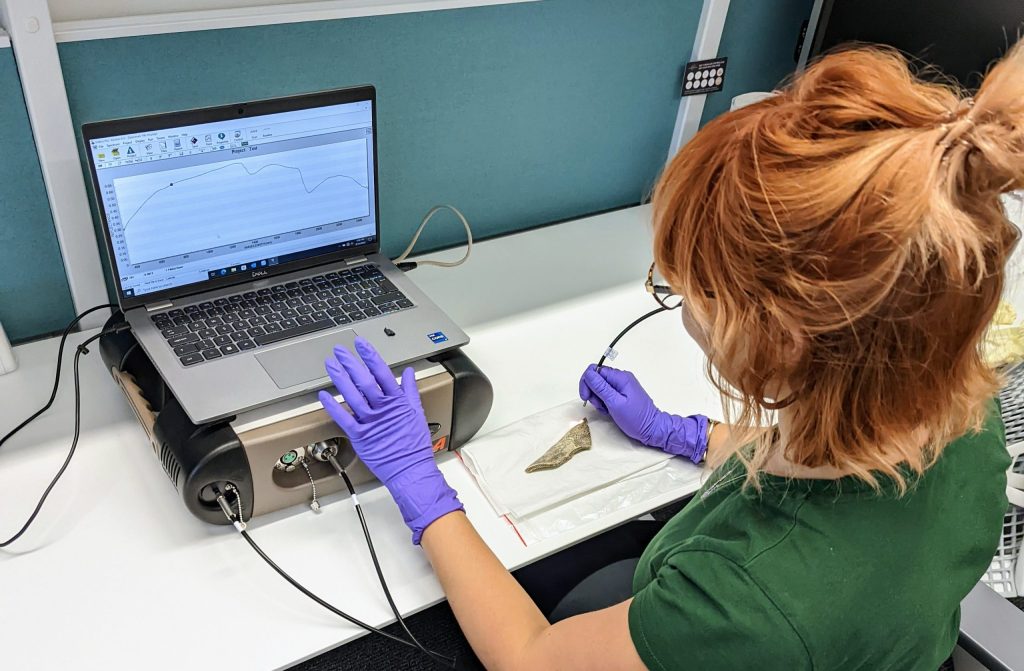Explore How The Francis Crick Institute Is Utilising The Unique Capability Of LabSpec 4 NIR Spectrometer To Investigate Human Evolution
We had the pleasure of speaking with Dr. Helen Fewlass, an Archaeolo gical Scientist at the Skoglund Ancient Genomics Laboratory, Francis Crick Institute, earlier this month. She shared some fascinating insights about her studies on human evolution and prehistory through the study of ancient biomolecules and how she will be using LabSpec 4 NIR spectrometer in her current research.
gical Scientist at the Skoglund Ancient Genomics Laboratory, Francis Crick Institute, earlier this month. She shared some fascinating insights about her studies on human evolution and prehistory through the study of ancient biomolecules and how she will be using LabSpec 4 NIR spectrometer in her current research.
We are really interested in this technique for helping us to study human evolution and human prehistory. We are interested in the lives of the people that lived a long time ago and in the different species of humans (hominins) that have evolved overtime in different environments. Understanding this involves collaborations between researchers from different disciplines and taking advantage of fantastic instrumental developments across the sciences.
“I’m an archaeological scientist and I specialise in analysing ancient bones attained from archaeological sites. One of my research focuses is the radiocarbon dating of bone, a method we use to tell how long it has been since an organism died.
Collagen (which makes most of the protein in bone) is an important material that we use for different types of analysis, including radiocarbon dating but also stable isotopic analysis to look at ancient diets, and palaeo-proteomics for species identification. A big challenge we face is that the protein in bone breaks down over time in the archaeological environment. Being able to find archaeological bones or fossils which still have collagen or other proteins preserved in them is important for a lot of analyses in archaeological science.

 One of the big projects I was focusing on during my PhD in Germany was analysis of bones from a site called Bacho Kiro Cave in Bulgaria. There, I was extracting collagen from a whole range of bones for radiocarbon dating and we were very lucky that the preservation of those bones is exceptionally
One of the big projects I was focusing on during my PhD in Germany was analysis of bones from a site called Bacho Kiro Cave in Bulgaria. There, I was extracting collagen from a whole range of bones for radiocarbon dating and we were very lucky that the preservation of those bones is exceptionally
good. We had very high levels of collagen and were able to obtain valuable data, but the NIR is really useful for sites where we have much more variable preservation or where we have really low levels of preservation. For example, if we work on sites where the environmental conditions are not optimal for collagen preservation, such as wet and hot tropical environments, typically bone will breakdown much quicker and then finding bone samples from those sites suitable for analysis is quite difficult. What we are hoping is that NIR will allow us to pick through thousands of bones from a collection and then non-destructively pinpoint which are the best samples for analysis.
Now we are excited to see how much information we can obtain about other proteins using the NIR, as well as collagen. In my current post-doc at the Crick, I am doing palaeoproteomics – using mass-spectrometry to sequence the amino acids chains that make up the different proteins that are preserved in bones or teeth. If protein fragments are preserved, we can look at differences in the sequences and start to get some genetic information from different species.
Traditionally, the human family tree has been reconstructed by palaeoanthropologists studying differences in the shape of hominin fossils. In recent decades, ancient DNA has become an incredibly important technique for studying human evolution and prehistory, but unfortunately DNA just does not survive in most environments beyond a few thousand years old. In contrast, proteins are much more long-lived and can survive for millions of years into the past. Protein fragments have been recovered from skeletal fossils that are nearly 2 million years old, and even older from eggshells. At the moment, we don’t know how far back we could actually go, but proteins have the potential to help us study ancient periods of human evolution and prehistory at the molecular level, providing additional information to the study of the morphology of the fossils.
We are curious to see if this high sensitivity NIR instrument can also detect information about other skeletal proteins to help us find the right samples to analyse with palaeo-proteomics. Hopefully it will allow us to address these important questions but also minimise destructive sampling of precious archaeological bones and fossils.”


